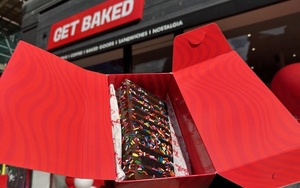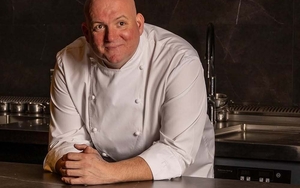NOT so long ago I attended a private dinner where a well-known Italian restaurant unveiled some French wines – the first ever to make it onto their list, Champagne aside. It was slightly shocking. Like discovering Sophia Loren wore a padded bra or Silvio Berlusconi was about to become Pope. Not that the wines were at all bad, indeed rather good, just somehow inappropriate.
It sounds like something you might pump into your Ferrari
It took an astonishing lunchtime at a rival Italian stalwart to help me recover my bibulous equilibrium. The wine list at Rosso has no truck with ‘foreign wines’. It is all as true blue Italian as the Azzurri – again apart from Champagne (and a cheeky sherry that sneaked in). More importantly, in its ‘Iconic Selection’ it boasts a pedigree crew of reds that stands comparison with the finest from Bordeaux and Burgundy. At prices to match, but with not unreasonable mark-ups, especially for some bottles with age under their belt. All prices below are what you’d pay in the restaurant up on Spring Gardens.
With a simple three-course lunch we tasted nine of their finest wines – two Amarones, a couple of contrasting Brunellos, a Gaja Barbaresco and four ‘Super Tuscans’. The most expensive bottle costs £900, ahead by a short neck of one at £800 and two at £700 with the cheapest trailing in at £175 and that's a 2011 Tignanello, one of the two wines championed by Marchesi Antinori that kicked off the whole Super Tuscan movement.
It sounds like something you might pump into your Ferrari and indeed it is a somewhat devalued term. Like with South American Reservas of Gran Reservas, the term covers a lot of bases with hundreds of such reds being produced across Tuscany – some are blends featuring Cabernet Sauvignon or Merlot, others are 100 per cent Sangiovese, so Chianti in all but name. Originally back in the 1970s bursting the straitjacket of the DOC (Denominazione di Origine Controllata) rulebook to create quality reds for an international market, they became a licence to print money, say cynics.
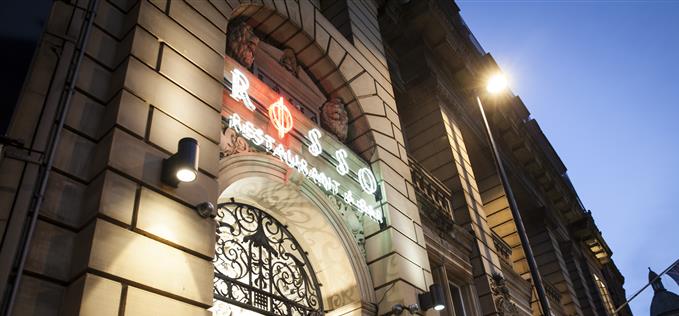 Rosso
Rosso ManCon's Gordo and guests at the Rosso wine lunch
ManCon's Gordo and guests at the Rosso wine lunchThe four we tasted at Rosso were disparate but delightful. The Tignanello, 80 per cent Sangiovese with 15 per cent Cabernet Sauvignon with 5 per cent Cabernet Franc, was like revisiting an old friend and discovering you still got on with all that supple black fruit, ripe tannins and crisp acidity giving it legs for a decade of development.
Equally beguiling in a different way was Ornellaia – wine of choice for George Clooney’s wedding. Ours was the 2001 vintage of this Bordeaux-style blend from Bolgheri. It’s the £900 one. If you have that kind of money, to spare treat yourself to its silky concentration and length with toasty oak in perfect union.
The avant-garde winery is next door to Sassicaia, quintessential Italian Cabernet Sauvignon pioneer. Our Sassicaia, Tenuta San Guido 2011 (£350), all currants and wild herbs on the nose, was in its infancy but, thanks to tannins that are ripe and balanced, just approachable now with a beautiful blackberry flavour.
The final Super Tuscan, inevitably from Bolgheri DOC, was Tenuta Argentiera’s Giorgio Bartholomäus 2010 (£350), a lush 100 per cent Merlot just lacking the character of the others, while Piemonte’s sole representative Barbaresco DOCG 2001 (£700), from the legendary Angelo Gaja surpassed all expectations. It’s very much a Robert Parker kind of red and he described this example (and I concur) as “A wine of tremendous harmony... a nose of crushed raspberries, spices and minerals, followed by complex dark cherry, tar and menthol flavours on a delicate medium-bodied frame of great length”.
 Giorgio Bartholomaus; below pouring the liquid gold
Giorgio Bartholomaus; below pouring the liquid gold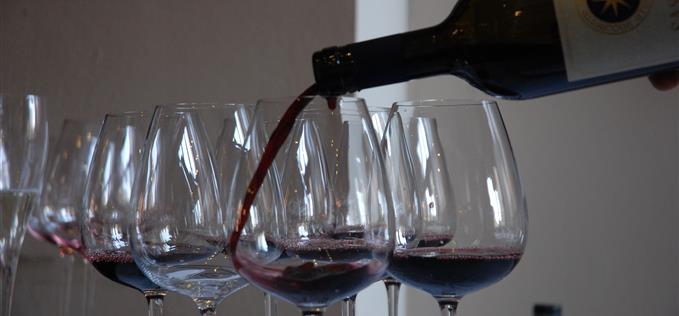
Of the two Amarone Riservas we tasted at the end with cheese the monumental Giuseppe Quintarelll 2004 version (£800) overshadowed the lighter (its only relative) Zenato 2008 (£250).
Both Brunellos were perfect with lamb chops encrusted with pistachio, but their styles differed greatly. The Brunello di Montalcino Cerretalto DOCG 2007 (£700) offered violet and chocolate aromas and immense velvety flesh on its tannic bones; yet I favoured the more trad Biondi Santi Riserva from the same vintage, a wonderful expression of the Sangiovese grape. Cherry, wild flowers, spice, great finesse, great potential – it’s almost infanticide to open it now.
That’s always a problem in gathering such immense quality on one list. Patience is needed for premium Italian wines. It is to Rosso’s credit they have sought out wines with considerable bottle age, making them accessible. For those who can afford, obviously.
And now for something completely different, though it shares the same latitude as Tuscany. Macedonia, to me at least, means Alexander the Great and Mother Teresa. I’d never imagined this Balkan neighbour of Greece and Bulgaria is responsible for three to four per cent of the world’s wine production. That’s 100-150 million litres – much from indigenous wine varieties that don’t trip off the tongue, Vranec the most popular for premium red production.
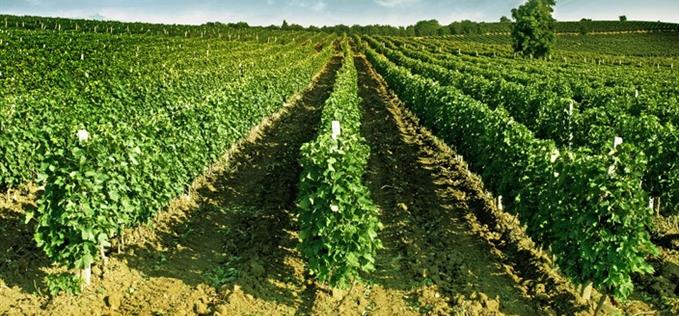 Stobi vineyards
Stobi vineyardsA major player is the Stobi winery, established in 2009, since when twenty million euros has been invested in state of the art equipment. I tasted some of their whites (imported by Signature Wines), most of which are available at enterprising Turton Wines near Bolton. Expect to pay £9.95 a bottle for the 2013s.
Stobi Cuvée 2014
Difficult vintage with yields almost halved, but this 70-29 per cent blend of local grapes R’kaciteli and Župljanka (told you) has lovely fresh zestiness that lives up to its delicate peach aroma.
Stobi Muscat Ottonel 2014 is less immediately appealing, floral on the nose but slightly harsh on the palate on its own, yet it handled a couple of spicy Thai dishes very well.
Stobi Žilavka 2014
From a characterful local grape adding a slight pepperiness to its lingering peach and lemon fruit, this was definitely my favourite, showing Macedonia is not all about red wine.
Fave summer rosé
I drank the 2014 Whispering Angel Rosé, Château d’Esclans, Côtes de Provence at a soft launch for the quirkiest new bar around, Tomfoolery at 34 in Alderley Edge. Esclans have led the resurgence of food-friendly Provencal rosé with their premium bottlings. This elegant herb and fruit entry level charmer is available from Waitrose at £16.99.
Fave summer white
Exquisite Collection Clare Valley Riesling 2014 (Aldi, £6.99) is terrific bargain for all Riesling lovers and a perfect introduction for those who have missed out on the grape’s charms. Lime, green apple, clean minerality, a hint of petrol (a good thing) in a sensual package that scooped gold at the International Wine Challenge.
Fave summer red
The easiest label for Frappato is the Sicilian Beaujolais, purple-red and so fragrant berry/cherry fruity it can take a light chilling for easy quaffing. The best example around is Frappato Fondo Filara Nicosia 2014 (Wine Society £7.95). Part of the Society’s August wine offer, it is their latest acquisition from the Nicosia winery that sources its grapes from Mount Etna. Antipasti, pizza, even fish dishes – Frappato is a versatile partner.
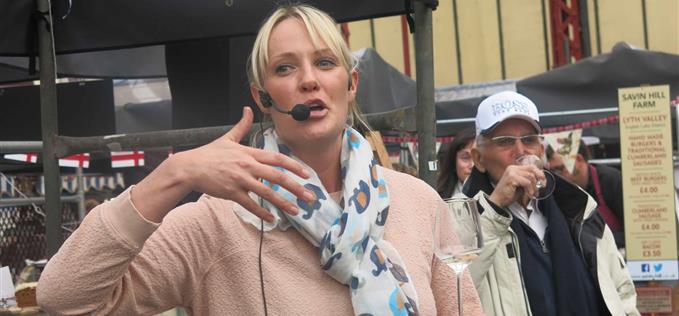 Kate Goodman
Kate GoodmanThe Manchester Food and Drink Festival is only a few weeks away. Its main wine event is the Big Indie Wine Fest in Manchester Town Hall’s stunning Great Hall on the evening of Friday 11 September and across two sessions on Saturday 12 September.
For £25 a head (book via www.foodanddrinkfestival.com) you can sample wines from merchants such as Reserve, Corks Out, Pacta Connect, T-Wright Wines, Alpine Wines, Italy Abroad, Tour de Belfort, Cru Bourgeois de Medoc, Epicerie Ludo, Veeno and Carrington as well as Manchester Wine School.
The previous day, the 11th, when MFDF opens, the Festival Hub in Albert Square is hosting an equally attractive event – Three Wine Women (again £25, book through the website). The trio in question are Kate Goodman, owner of West Didsbury's Reserve Wines shop, who found national fame as wine guru on the BBC’s revived Food and Drink Show; Spanish specialist Jane Dowler, who runs Evuna on Deansgate and in the Northern Quarter; and The Guardian’s Fiona Beckett, one of the UK’s top drinks writers and coincidentally mother of Will, co-owner of the Hawksmoor restaurant chain.
The evening kicks off with a Prosecco tasting led by Kate. Fiona will then introduce a cheese and wine matching, focusing on whites. Jane follows with a Spanish red wine tasting and food pairing and Kate round things off sweetly with a sherry tasting and dessert matching.
Follow Neil on twitter @AntonEgoManc













